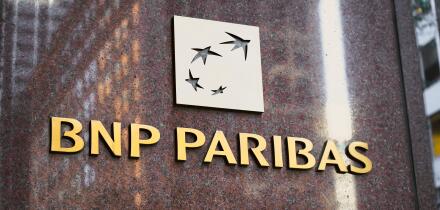Supranationals and agencies must be wondering what all the fuss was about. Far from the shock that shot through markets when the US Federal Reserve first hinted at scaling back its quantitative easing programme in May 2013, the actual implementation of tapering has had minimal effect on the ability of supranationals and agencies to print bonds this year.
While opinion is mixed on where yields will be come the end of 2014, in the short term supranational and agency funding conditions are in rude health — and doors to new stores of euro demand are starting to open.
Many believed that it would be panic stations as tapering took its full effect on Treasury yields in 2014, but in fact US yields fell over the new year period. If anything, the signs from central banks mean that these conditions are set to be around for the foreseeable future — so issuers should jump in while the market is hot.
“The year has started incredibly well with a return of risk sentiment across all sectors,” says Bill Northfield, head of SSA origination at Deutsche Bank in London.
“Investors have accumulated a great deal of liquidity. An increasingly benign monetary policy outlook across all four main zones — the eurozone, US, UK and Japan — has catalysed considerable risk appetite in recent months. There is a sense that core interest rates will be low for a long time, regardless of US [quantitative easing] tapering. Accommodative measures are still in place as global politicians recognise that growth is needed to restart economies. That sentiment has filtered through across so many different parts of the market to bolster investors’ confidence.”
It seems that the market truly had nothing to fear but fear itself. Many bankers are happy to admit that estimates of rising US yields could turn out to be wrong.
“Before tapering started, 10 year Treasury yields had risen to 3% but have since fallen back to 2.7%,” says Sean Taor, head of European DCM at RBC Capital Markets in London.
“Tapering itself hasn’t led to the very quick increase in yields that many were concerned about. Central banks globally have been very co-ordinated and many of their decisions are well flagged to the market. The fear of the unknown was greater than tapering itself. RBC’s forecast for 10 year Treasuries at year end is 3.6% — currently that looks pessimistic.”
But not everyone is convinced that tapering simply had to become a reality for investors to come to terms with the watering down of the liquidity infused punchbowl they had all been drinking from since the financial crisis blew up late last decade.
“The shock was more when talk of tapering started in May 2013,” says Vincent Chaigneau, global head of rates and FX research at Société Générale in Paris.
“That had an effect and was very painful for the US Treasury market and emerging markets in particular.
“This year has been very different. The Fed decided to maintain the pace of tapering so there have been no real surprises. But support for US Treasuries has come from disappointing US data, which was to some extent related to the extreme weather in the country over winter. But the market is not sure whether it’s entirely weather related or whether the boost to the economy in the second half of last year was transitory or permanent. The soft economic news, as well as the troubles in emerging markets, have pushed US bond yields down after quite a nasty lift at the end of last year. It’s been outside influences that supported the downward move in yields, rather than the Fed itself.”
Chaigneau believes that an improving US economy, coupled with the Fed’s walk towards the quantitative easing exit, will push yields higher.
Despite that possibility, bankers are confident that the course towards the end of monetary stimulus is being steered competently.
“The expectation of an event is always far more concerning than when it actually is happening,” says Stuart McGregor, head of SSA DCM at RBC Capital Markets in London.
“We’ve found a stable market point and the belief that tapering can happen in a smooth fashion has already been shown. That much liquidity being taken away at the end of the year must have a knock-on effect somewhere, but hopefully that’s just a smooth realignment of the valuation of risk and liquidity.”
Moving apart
While the US has already embarked on a path towards the end of quantitative easing — and with economic recovery strengthening in the UK, the Bank of England could follow — the opposite is true for the other main currencies’ central banks.
The Bank of Japan has sparked the most ambitious programme yet with a plan to double its monetary base by 2015, while the European Central Bank is widely tipped to introduce some form of quantitative easing, reduce rates or take other steps to bring much needed growth to eurozone economies.
But while such divergent paths across the globe might concern some, most market participants are confident in the monetary policymakers’ ability to avoid surprises and keep things on track.
“There is a decoupling between different markets but I don’t see it being a problem for SSAs,” says Jean-David Cirotteau, credit analyst at Société Générale in Paris.
“The beta between Bunds and US Treasuries tends to increase when US yields rise, so when you have better US economic news US Treasuries increase but the sensitivity of the Bund to that declines. That’s because of the cyclical gap between Europe and the US and because the policies are diverging. The Fed is on its way to the exit while the ECB might add more stimulus. We believe there’s a good chance the Treasury/Bund spread will widen more. But we’re not sure that will have a large impact on issuers’ plans — what will be more important is the normalisation of the cross-currency basis that we’ve seen.”
Achieving parity
It was the journey towards parity of the euro/dollar basis swap in particular that created much chatter among the banking classes in late 2013, as talk of traditional dollar issuers printing benchmark deals in euros took hold.
The World Bank — often the leader among its supranational peers — brought a €1bn December 2016 bond in November, taking advantage of the rising euro/dollar basis swap to print its first benchmark in the currency in four years.
The euro/dollar basis swap had wallowed in the depths during the eurozone sovereign debt crisis — in late 2011 it was as low as minus 80bp at the three year part of the curve — making euro deals prohibitively expensive for dollar funders.
But the basis swap spread has increased since 2011. The three year rate hovered around minus 20bp in September last year, before rising through October and into November. It reached minus 11bp on November 1 — its most attractive position for euro funders in years — but started to fall slightly ahead of the World Bank deal, which came on November 6. The rate was at minus 13.5bp on the day of the deal.
However, it restarted its ascent to reach minus 5bp in mid-January — a level it has hovered around since.
Other traditional dollar issuers have told GlobalCapital that they could follow the World Bank into euros in 2014, creating anticipation for what would be inaugural euro benchmarks for Norway’s Kommunalbanken and Sweden’s Kommuninvest. Denmark’s KommuneKredit is also mulling a first euro benchmark since 2010.
“There is little difference between issuing in euros and dollars when looking solely at the cross-currency adjusted swap,” says Cirotteau at Société Générale.
“Issuers have the chance to diversify. Some of the traditional dollar issuers could come to the euro market this year. It’s also true for European issuers, which should be able to access the dollar market fairly easily. We’re already seeing some evidence of this in recent weeks. This is partly because of the normalisation of the basis swap and also because covered bonds are not eligible for US banks’ liquidity coverage ratio requirements, so supranational and agency bonds in dollars are interesting for them.”
Euro issuance by supranationals and non-US agencies is on the increase — at least so far in 2014. The issuers had printed $84.9bn of paper in euros by March 7, compared with $74.7bn at the same point last year, according to Dealogic (see graph). Dollar issuance fell to $67.4bn from $69.9bn over the same period.
However, the extent to which euro supply can grow is limited.
“I think that there will be more euro issuance but I do not see a huge shift away from the dollar market,” says Taor at RBC Capital Markets.
“On the whole the investor base in euros is more varied and pricing in euros is often less predictable. Additionally the dollar investor base, which is perhaps smaller in number but individually has larger buying power, is more limited in terms of the number of issuers it can buy. As a result these investors have always been very keen to buy top quality assets. Central banks and bank treasuries have also had to buy a large proportion of their investments in dollars so there will always be demand.”
The limited universe of assets for dollar SSA investors consists of US Treasuries, supranational debt and agency paper. But there are added questions for dollar issuers considering euros, beyond simple pricing concerns, says McGregor at RBC.
“It’s not a straight question of whether you’re 5bp better off in euros than in dollars. Years of investor work has gone into the dollar market and there’s less competition,” he says.
“I can’t see the euro market becoming the same for the SSA market as dollars is, especially as [central bank] foreign reserves are still mainly in dollars. Plenty of issuers treat euros and dollars as strategic markets and you get a bigger footprint of investors in euros, but dollars will remain the bedrock for those with sub-$15bn [funding] programmes.”
One issuer that plays the dollar and euro markets strategically is the European Investment Bank. Its euro issuance has been higher than its dollar business over the last few years — it raised €35.3bn in euros and €21.5bn equivalent in dollars last year — but the vagaries of cost advantages will not force a rethink on weighting.
“The normalising basis swap won’t affect our plans,” says Carlos Ferreira da Silva, head of the EIB’s euro funding team in Luxembourg. “We are of course aware of the narrowing basis, but as a benchmark issuer in euros, dollars and sterling we maintain a strategic and regular presence in these markets.”
Two-way no way?
But there are other impediments to traditional dollar issuers switching to euros — and other currencies. While many agencies have signed up to two-way credit support annexes (CSAs) with swap counterparties to bring down the costs of new issue swaps, supranationals have been much more reluctant to change and have stuck with their one-way agreements meaning they will not post collateral to swap counterparties in the event a swap moves against their favour.
That has created a cost for the swap dealer that is ever more often being passed on to the counterparty in the form of higher charges in line with new regulatory requirements.
With banks under ever greater pressure to justify their return on capital — and derivatives becoming ever more capital intensive — that creates a risk that the dollar market could even become a little too busy, according to some.
“The one-way CSA often impairs pricing most on cross-currency trades,” says Deutsche Bank’s Northfield. “It means it’s more expensive for an issuer to tap a non-core currency sector where there might be some latent currency volatility. That means some issuers might need to concentrate more of their issuance in dollars. This can lead to potential overcrowding, which could then impact spreads and ultimately medium and long term funding costs. Equally, we have seen some investors in the non-core markets become more focused on yield and willing to accept more credit risk. They are a lot less concerned about liquidity because they buy to hold and thus we’re seeing increased competition for investor liquidity.”
But behind closed doors, discussions to bring supranationals on to two-way CSA contracts do seem so be making progress, say some bankers.
“There is clearly a lot more discussion internally and externally from issuers,” says one SSA banker in London. “But there is some frustration from the bank side and from some of the issuers as well. I’d like to think in the future the world will have two-way CSAs although I’m not blind to the fact that it’s difficult for issuers to change the way they’ve done things, particularly when they can still get competitive swap pricing. But certainly there’s a more level playing feel between the banks and the issuers and a lot more discussion on this subject.”
However, others are less confident.
“Agencies are coming on board but supranationals are dragging their heels,” says another SSA banker in London. “The ball is in the supranationals’ court. Some are rather like ostriches — they are absorbing additional costs when they access the capital markets. They point out that they still have access, but they are paying 10bp more. That’s passed on to their clients which is a waste of money. It’s very frustrating.”






